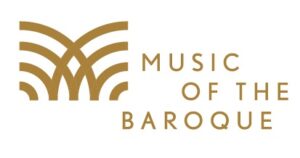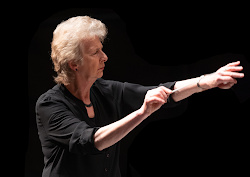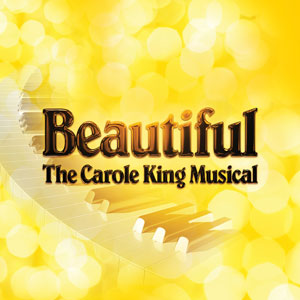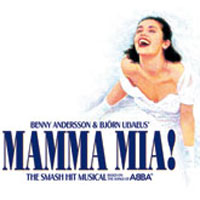
 *** High points and low points punctuated Johann Sebastian Bach’s “Passion According to St John” BWV 245 (a/k/a “The St. John Passion”) during Sunday afternoon’s concert by the Music of the Baroque. It’s fascinating how when things come together and everybody is “in the zone”, we don’t think about all the little things that can go wrong which can make or break a performance.
*** High points and low points punctuated Johann Sebastian Bach’s “Passion According to St John” BWV 245 (a/k/a “The St. John Passion”) during Sunday afternoon’s concert by the Music of the Baroque. It’s fascinating how when things come together and everybody is “in the zone”, we don’t think about all the little things that can go wrong which can make or break a performance.
Unfortunately, it took a moment for the heavy beat of the Bach to materialize. Far more importantly, however, not enough time was spent at the beginning of the concert to tune the orchestra properly, so the entire first half of this grandiose composition was out of tune. The choir was fine—excellent, in fact, thanks to chorus director Andrew Megill—but my suspicion was that one or two violins were not tuned to the right pitch. The dissonance was glaring and made it difficult for me to concentrate on the music whenever the full orchestra was playing. It was only after the intermission when this flaw was remedied that I could now enjoy the production.
Thomas Cooley, who played the role of the Evangelist and who sang the tenor arias, was a tour de force who superbly performed the Bach. His rendition was exceptional; his voice, stirring. Neal Davies, who played the role of Jesus and sang the bass-baritone arias also did an admirable job. Miah Persson stars as the soprano (and wears an absolutely lovely dress). Alto Clara Osowski performed my favorite part of the composition, right after Davies (Jesus) sings, “It is finished!” and following the instrumental duet of viola de gamba (Craig Trompeter) and theorbo (Brandon Acker). Other soloists included Kevin Krasinski as Pilate, Gilbert Spencer as Peter, Nathalie Colas as the Maid, and John Swedberg as the Servant. What I liked most was at the very end when conductor and music director Dame Jane Glover joyously credited all of the vocal soloists and the prominent instrumental performers. Highest praise must go to organist Michael Beattle and the three first violins, Gina DiBello, Kathleen Brauer, and Kevin Case, as well as flutist Mary Stolper, oboist Anne Bach, cellist Ezra Seltzer, bassoonist William Buchman, and bassist Collins Trier, among others.
Now back to the deficiencies in the program. I couldn’t figure out why Cooley was seated up front and Davies, Persson, and Osowski towards the back, behind the orchestra but in front of the choir. I would have liked all four of them seated towards the front of the stage. This would have added dynamism, if not also symmetry, to the presentation. Missing in the libretto were the numbers that identify the various parts, arias, and recitatives within the composition, such as “No. 20 Aria Tenor, etc.” I find those numbers to be very useful when examining the pacing of the work and especially when making comparisons with previous productions by other ensembles.
Another thing we more-or-less take for granted in this day and age is that the projections overhead will be done well. Here I’ll mention the same comment as when I reviewed the St. Matthew Passion a year ago: The translations into English (from German) in our libretto and those in the projections are not exactly the same. While these variations don’t make all that much difference when watching and enjoying the performance, they are quite noticeable. My guest and I both caught the same mistake near the end when the word “rest” was erroneously translated into “peace” (and this was later corrected in the supertitles). But now I’m going to sound ultra-picky: The glass on the projector needs a bit more cleaning, for on occasion, a few of the letters were not as distinct as they should have been. For example, the word “Highest” looked too much like “H ghost” or “H guest” until I figured out that a letter was missing.
Speaking of guests: Music is a very subjective thing, and my guest found the religious music “ponderous and interminable” (her words) with all of Bach’s repetitions. Opinions were rather mixed when I listened to the audience members milling around in the lobby at the end. One gentleman thought the concert was perfectly wonderful and suggested to his colleague that several other pieces of music in this vein ought to be performed by Music of the Baroque. Others were not as enthusiastic.
After I listened to Bach’s “The St. John’s Passion” in the afternoon, I came home and watched the Oscars on TV. At some level, they are polar opposites: a religious form of entertainment versus a secular one. Plus the contrast could not be any plainer between music of the Baroque period and that of modern times. That said, productions in any era must rely on the quality of the performing artists, the quality of the staging, and the decisions by those in charge about how a show should be put together. Yet the moment of truth always contains some amount of serendipity. We must acknowledge the vicissitudes of a live performance even when everything is rehearsed well.
“The St. John Passion” (a/k/a “Passion of our Lord Jesus Christ According to St. John”) was performed by Music of the Baroque on Sunday, March 10, 2024, at 3:00 p.m., at the North Shore Center for the Performing Arts, 9501 Skokie Boulevard, in Skokie.
A subsequent performance will take place on Monday, March 11, at 7:30 p.m., at the Harris Theater for Music and Dance, 205 W. Randolph Drive, in Chicago.
For more information and to purchase tickets for future performances of MOB, please go to: https://www.baroque.org/ or call 312-551-1414.
Music of the Baroque is a resident company of the North Shore Center for the Performing Arts. To learn more about the venue, their future offerings, and ticket prices, visit: https://northshorecenter.org/.
Note that the North Shore Center now has security procedures upon entry. Please refer to: northshorecenter.org/plan-your-visit/safety-entry-procedures/ for more information.
To learn more about the Harris Theater, their future offerings, and ticket prices, go to: https://www.harristheaterchicago.org/.






More Stories
“The Prom” at Glenbrook High School
“The Simon & Garfunkel Story” comes to Chicago
Passover Dinner at Frank’s ( Italian style)